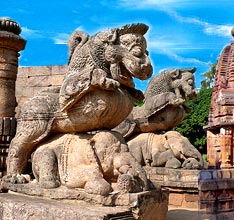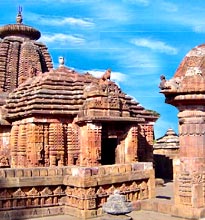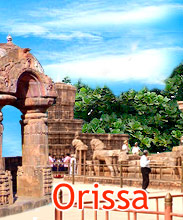 The
original inhabitants of Orissa were the native tribal groups, namely,
the Buiyas and Gonds. The origin and history of the state can be traced
back to the ancient times, when it was known by different names like
Kalinga, Utkal and Odra. During those times, the territory of Orissa was
far beyond than what it is today. During the era of the Mahabharata,
Kalinga, Odra and Utkal emerged as dominant kingdoms.
The
original inhabitants of Orissa were the native tribal groups, namely,
the Buiyas and Gonds. The origin and history of the state can be traced
back to the ancient times, when it was known by different names like
Kalinga, Utkal and Odra. During those times, the territory of Orissa was
far beyond than what it is today. During the era of the Mahabharata,
Kalinga, Odra and Utkal emerged as dominant kingdoms.The political history of Orissa began with the rule of emperor Nanda of Magadha. Later on, when Chandragupta Maurya defeated Nanda, his empire did not include Kalinga. Kalinga was captured by Asoka, which was a major event of the bygone times. The battle of Kalinga had far reaching consequences. It brought about a revolutionary change in the personality of Emperor Asoka, which in turn changed the very course of Buddhism in India.
The second century A.D. witnessed the strong rule of Kharavela. In the 4th century A.D., the Gupta Empire took over the state. It was followed by the Bhaumakara dynasty, which was later overthrown by the Soma dynasty. The thirteenth and fourteenth century was the period of Muslims Sultanate, which continued till the year 1568. Thereafter, Orissa witnessed the rule of the Mughals.
It came to an end with the death of the last Mughal Emperor, named Aurangzeb. The throne was then taken over by the Nawab of Bengal, who was compelled to surrender Orissa to the Marathas. The rule of Marathas continued till the British conquered the state in 1803. Later in the year 1949, Orissa got an independent status and this is how the present state came into existence.









